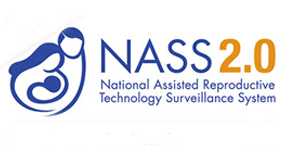Fertility clinics in the U.S. report and verify data on the assisted reproductive technology (ART) cycles started and carried out in their clinics, and the outcomes of these cycles, during each calendar year. ART includes all fertility treatments in which either eggs or embryos are handled. The main type of ART is in vitro fertilization (IVF). IVF involves extracting a woman’s eggs, fertilizing the eggs in the laboratory, and then transferring the resulting embryos into the woman’s uterus through the cervix.
These ART data are a rich source of information that can give potential ART users an idea of their average chances of success per ART cycle or ART transfer. Average chances, however, do not necessarily apply to a particular individual or couple. ART success rates vary in the context of patient and treatment characteristics, such as age, infertility diagnosis, number of embryos transferred, type of ART procedure, use of techniques such as ICSI, and history of previous births, miscarriages, and ART cycles. People considering ART should consult a physician to discuss their treatment options.
Use the map below to locate fertility clinics near you. Learn about the services they provide, the types of patients they see, and their success rates.

Learn more about CDC’s National ART Surveillance System (NASS) and why and how CDC collects fertility clinic data.
View ART National Data, 2015
ART Reports, 2015
Final Data, 2015
Based on CDC’s 2015 Fertility Clinic Success Rates Report, there were 231,936* ART cycles performed at 464 reporting clinics in the United States during 2015, resulting in 60,778 live births (deliveries of one or more living infants) and 72,913 live born infants. Of the 231,936 ART cycles performed in 2015, 45,779 were banking cycles in which the intent of the ART cycle was to freeze all resulting eggs or embryos for future ART cycles and for which we would not expect a resulting pregnancy or birth. Although the use of ART is still relatively rare as compared to the potential demand, its use has doubled over the past decade. Today, approximately 1.6% of all infants born in the United States every year are conceived using ART.
*Note: This number does not include 1 cycle in which a new treatment procedure was being evaluated.
- Page last reviewed: October 11, 2017
- Page last updated: October 11, 2017
- Content source:
- Maintained By:


 ShareCompartir
ShareCompartir